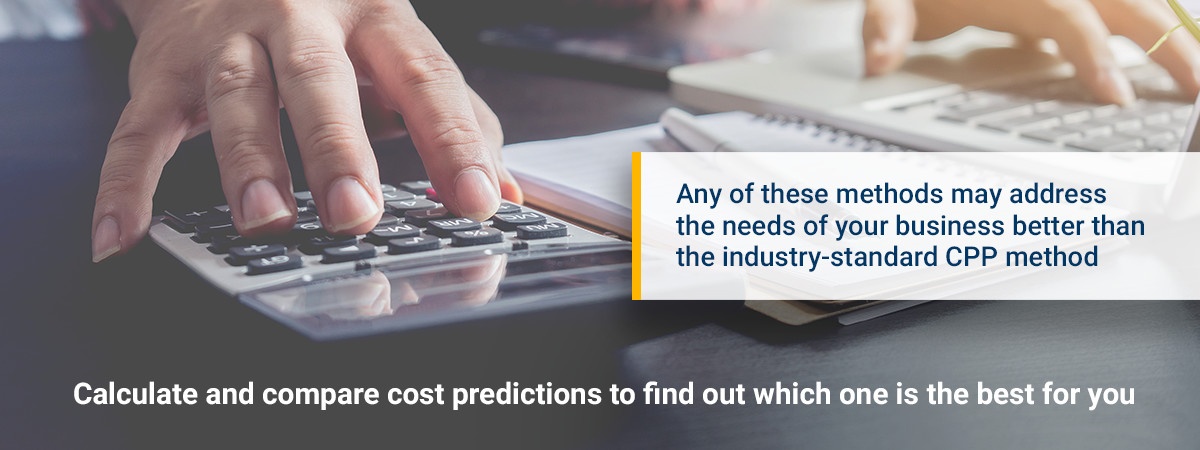
Now that managed print service (MPS) providers have permeated the Fortune 500 market and continue to work their way downwards towards small and medium-sized businesses, corporate executives are looking more carefully at their printing options than ever before. MPS agreements can vastly reduce corporate spend on document control.
Most enterprises are drawn to MPS agreements because of the savings and security benefits they offer. These services are usually priced through a calculation of cost-per-page (CPP), along with a certain volume commitment.
Corporate executives need to calculate the difference between the expected spend of a CPP and volume commitment agreement and their expected return on investment (ROI). This requires calculating the total cost of ownership and factoring in future digitization efforts in order to arrive at an accurate volume printing commitment.
WHAT IS TOTAL COST OF OWNERSHIP?
The term is exactly what it sounds like: the total cost of owning and operating all the equipment within a certain field – in this case, printing equipment. When an MPS calculates its service price, it needs to perform the following the steps:

With these three factors accounted for, MPS companies can determine what the total cost of ownership would be for a given contract. That cost is then compared to the expected ROI to determine how much the client enterprise actually saves on an annual basis.
Total cost of ownership includes:
- Printer hardware cost
- Printer consumable costs
- Carrying costs of supply inventory
- Cost of external and internal IT staff
- Network infrastructure costs
- Employee productivity costs
- Energy use costs
- Disposal costs for retired or obsolete equipment
These calculations can be skewed by a few factors. Some of these include:
Page Yield
The average amount of ink or toner likely to be consumed. This factor is largely dependent on the type of industry the client's enterprise operates in. Some industries rely on deeply detailed color images, while others can get away with low-resolution black-and-white imagery for most documents.
Employee-to-Print Ratio
Another important factor is the average number of employees sharing a single printing device. Typical figures for this ratio are between 1:10 and 1:25, according to Beroe, Inc.
These factors are typically addressed through slight changes in the CCP of the plan in question. However, plans of this nature don't always match with the client's best interests.
CONFLICTS OF INTEREST IN PRICING CALCULATIONS
The CCP model can create a conflict of interest between the enterprise (who wishes to reduce printing) and the MPS (who makes money by printing as much as possible) according to PrintAudit.com.
Generally, enterprises interested in CCP MPS deals need to look at the following pieces of information:
Duplex Printing
How are double-sided prints handled by the MPS provider? Ideally, they should not cost the same as printing on two sheets of one-sided paper.
High Employee-to-Print Ratios
Most MPS vendors will try to minimize the number of printers used in any contract. This decreases total cost of ownership and increases ROI. However, even though having a small number of high-powered printers looks good on paper, it can lead to productivity issues.
The best way to approach a deal structured in this way is by focusing on accurately estimating the volume commitment and concentrating on the employee-to-print ratio.
ALTERNATE CALCULATION METHODS
Some printing service providers use other means of billing clients to more accurately represent the difference between client spend and ROI. These include some of the following methods:
Base and Click
The vendor charges a base price for hardware and then charges a separate, smaller CCP. While technically arriving at the same sum as a strict CCP solution, this method can produce cash flow advantages for certain enterprises.
Cost Per Click Without Volume Commitments
In theory, this should serve the client's needs better because it does not require volume commitments. In practice, vendors usually commission refurbished or second-hand devices in order to manage costs because they do not have a guarantee of continued income.
Volume Plan
This plan is favored by organizations with few print requirements. MPS vendors make printing equipment available up until a certain volume of prints is reached. Upon reaching that volume limit, the device gets replaced.




 United States
United States
